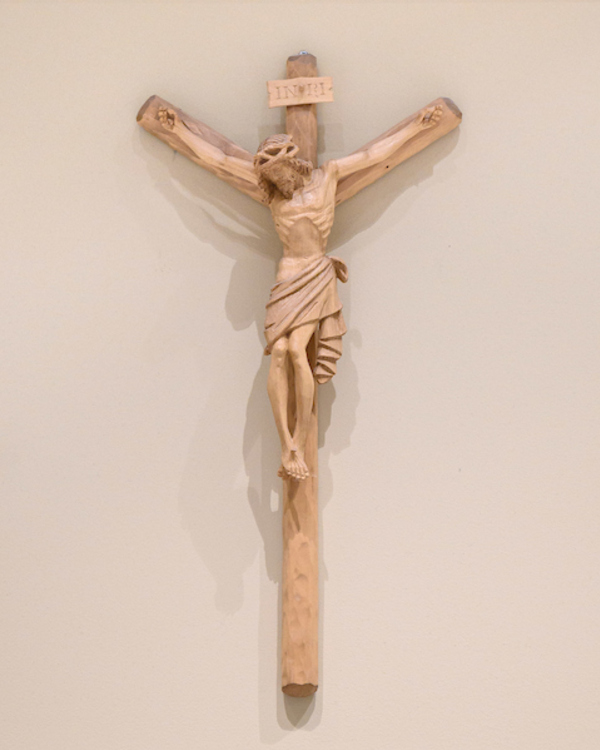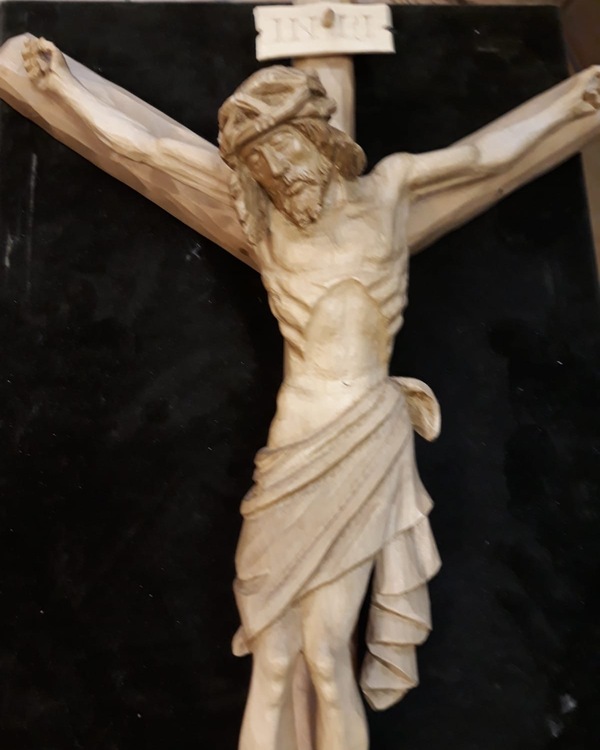Keller Fork Cross — Christ with Cross
The style of this piece derives from the early 14th-century tradition of the so-called German fork cross (Gabelkreuz), the wood of the crucifix being shaped like a fork or like the letter Y, with the horizontal pieces as vertical as they are horizontal. These were found above all in the German Rhineland; they increased after the plague years of 1348 and 1349.
The most striking examples of this tradition, both intense and horrific, are in St. Maria im Kapitol in Cologne, an 11th-century Romanesque church, the largest of 12 such churches in Cologne, with a crucifix from ca. 1304, and in St. Georg in Cologne, from ca. 1380. In these earlier pieces Christ’s head, which hangs low on his chest, and his body are strewn with open wounds and blood. The excruciating facial expressions, with the mouth itself gaped open and full of blood, convey utter agony. The Y shape resembles a tree, symbolically the tree of knowledge, which is tied to the origin of sin, to which Christ responded with his suffering on the cross.
Oberammergau, located in the Bavarian Alps, is known not only for its passion play performances every decade, but also for its woodcarving tradition, which offers realistic depictions and does not seek to soften Christ’s suffering. This artistic tradition reaches back to 1520. The local artisans soon developed a reputation that extended across Germany and indeed Europe.
A local guild was formed in 1836, which limited the number of artists and has continued to ensure quality through an examination for apprentices and the certification of masters. The woodcarving tradition reached its high point in the 1970s, after which demand began to wane. The woodcarving shop from which this crucifix derives, die Holzschnitzerei Keller, is one of the few remaining family operations that sells works of its own creation and has been doing so for generations. This particular piece was created in 2019 and acquired by the University in 2020.

